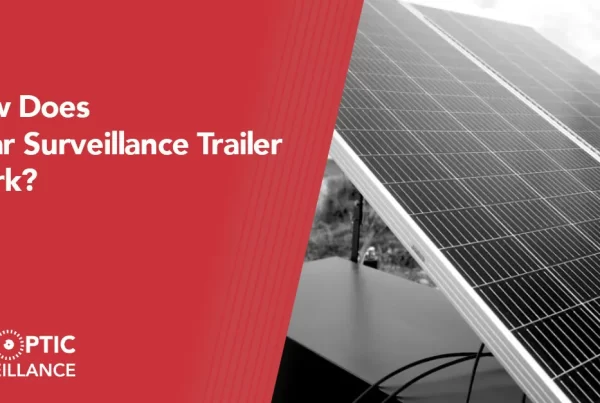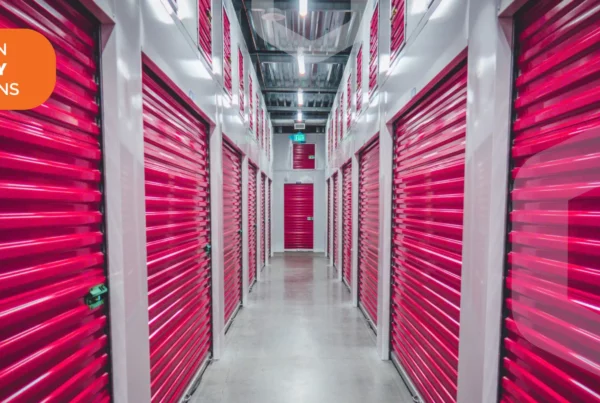COMPLETE GUIDE TO COMMERCIAL KEYLESS DOOR ENTRY SYSTEMS FOR BUSINESSES
Regarding the security of contemporary commercial buildings, access control system planning has almost become omnipresent. The most cutting-edge configurations of today’s systems are not only capable of offering dependable physical security benefits, but also a wide range of data management and further integration functionality.
The majority of contemporary commercial properties have access control systems, which can range from basic keypad-based devices to sophisticated biometric scanners, installed at their doors, parking lots, perimeter fences, and interior key locks. Nevertheless, not all access control system designs can satisfy the unique security requirements of various commercial structures.
Property owners must take into account how these systems are to be implemented and used, as well as the objectives of the security network and the typical risks that the site is likely to face, in order to reap the full benefits of door access control. A complete access control strategy is necessary to do this. Property owners can read this guide to evaluate the advantages, access control examples, use cases, and factors to take into account when creating an access control plan for commercial facilities.
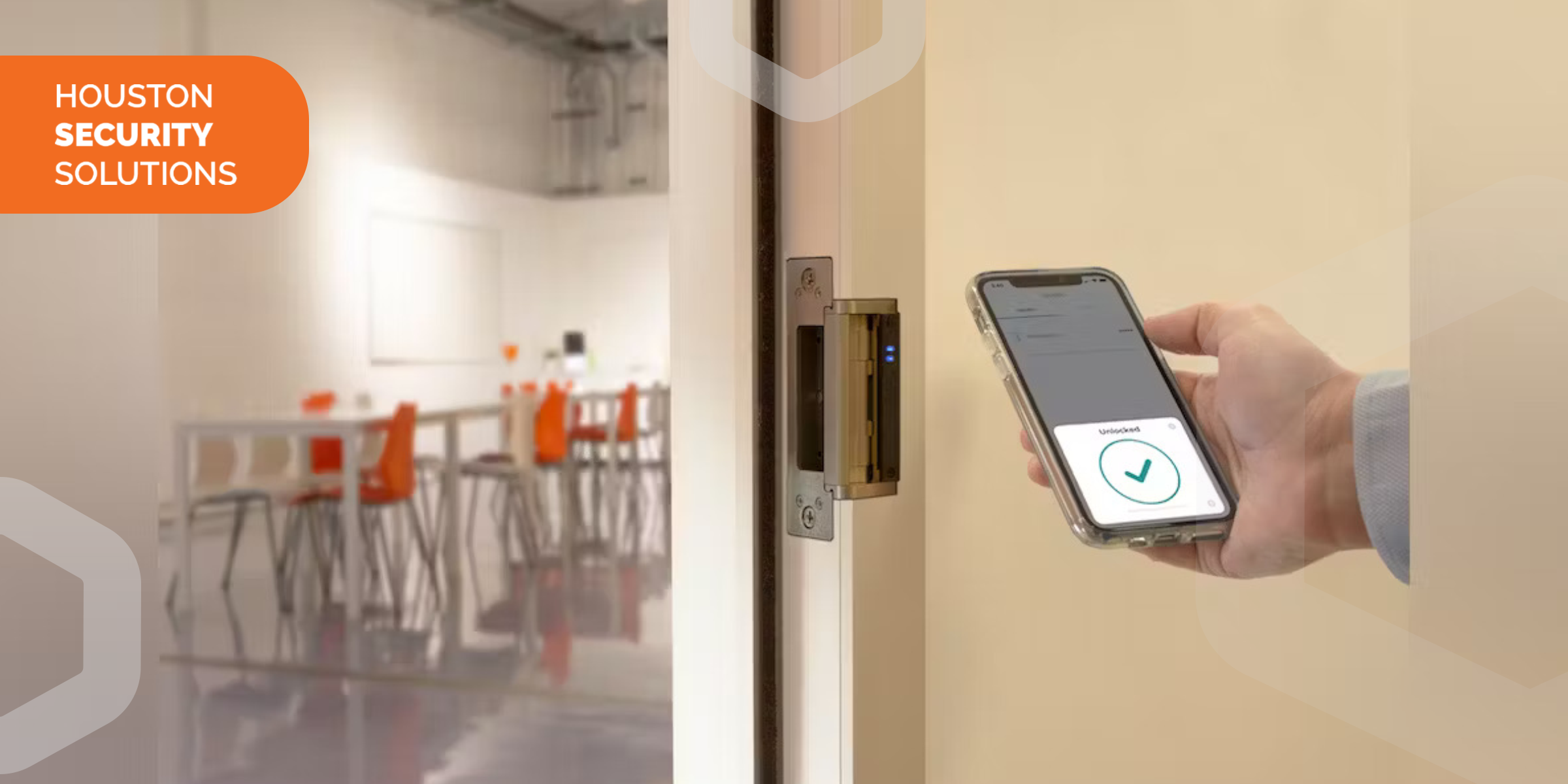
Where to start with access control system planning
Prior to focusing on the specifics of any access control system design, it’s critical to assess the property’s overall security requirements and security weaknesses. This covers things like the kinds of security risks that the system has to be able to guard against and how access control can be included into a larger security network.
Property owners can choose which critical features are most important and how to implement specific hardware components with efficiency, installation costs, and future scalability in mind by understanding the objectives of an access control plan. While creating an access control plan, the following points should be outlined:
Setting security objectives
The location of the property will have a significant impact on the sort of access control system to be used in the building. For instance, a business structure located in a high-crime area will need to place a lot of emphasis on physical security elements like alarms, deadbolts, and automated lockdown system features. On the other hand, there will be a greater requirement for sophisticated cybersecurity measures for access control systems intended to safeguard data centers and computer servers housing private material. Any access control plan should include both physical and cyber security measures.
recognizing both external and internal risks
Reviewing local crime statistics can often help understand the security risks posed by external threats like break-ins and vandalism, but many businesses are also affected by internal security issues because, according to some studies, up to 75% of white-collar workers admit to stealing from their employer at least once.
Access credentials must be actively managed in order to protect a commercial property from internal threats. Security teams and trusted admins should have the ability to remotely monitor and modify permissions in order to make sure that guarded internal environments are difficult to penetrate.
Advanced mobile and cloud-based access control can frequently offer strong physical and cyber security protections for enterprises entrusted with important digital information, such as banking institutions and educational facilities, through the active monitoring of user credentials.
Access Your Office with Smartphone
Discover why thousands of companies have Access Control System
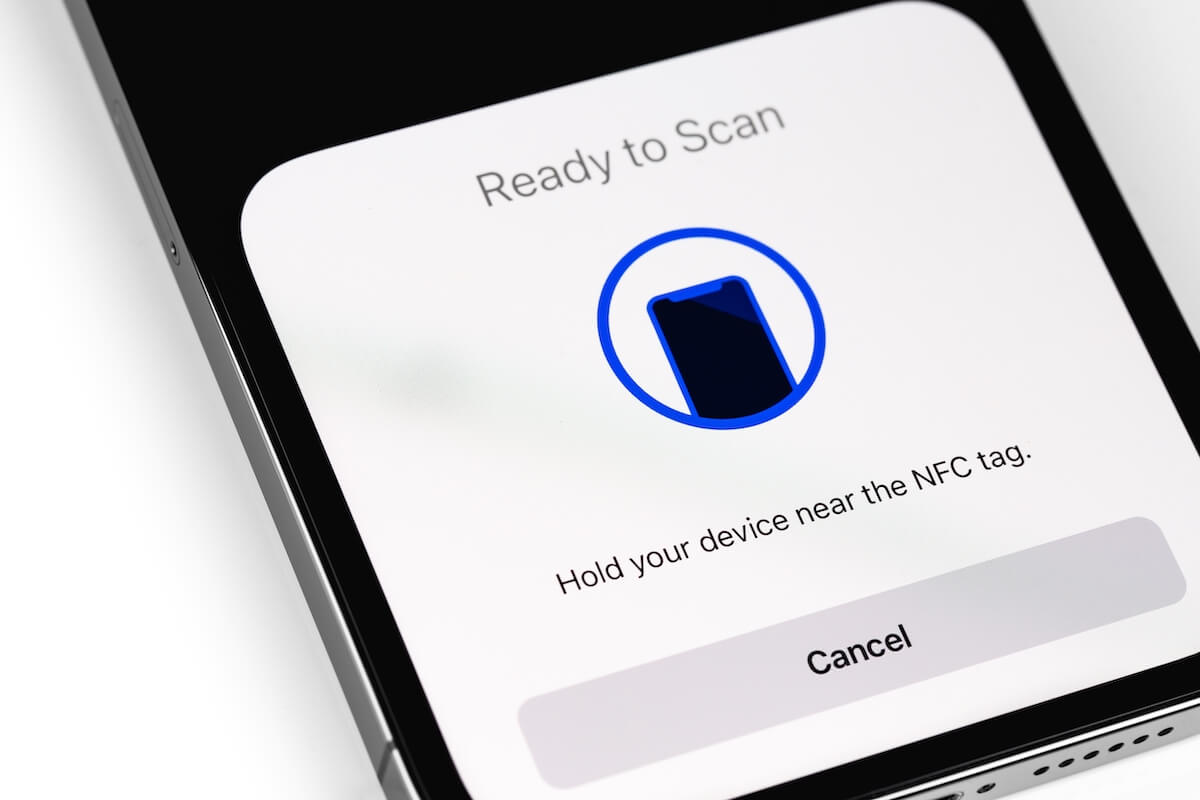
Environmental access control design consideration
The risk of harsh weather and other uncontrollable environmental variables, such as excessive temperatures, storms, and flooding, negatively affecting the operation of some security elements, is an issue that can be easily neglected while drafting an access control plan.
The installation of cameras that can operate in extreme heat on exposed exteriors or the use of electrical components with an IP65 or higher water and dustproofing rating if they must be used frequently in torrential downpour or inside factories that frequently experience high particulate concentrations are two examples of access control plans that take environmental considerations into account.
Environmental design to reduce crime
Following the concepts of crime prevention through environmental design, in addition to a well-designed and integrated access control system plan, may assist property owners in lowering the frequency of physical access crimes, such as break-ins and vandalism.
Property owners should think about the four main components of natural security in order to successfully implement these principles:
Territorial reinforcement is the establishment of definite lines separating public and private lands, such as fences, hedges, and other impenetrable perimeter markers.
Natural cover and alcoves that could hide potential intruders from cameras and guards need to be avoided at all costs.
Environmental access control is the use of landscaping, walkways, and lighting to route foot traffic along specified patterns in consideration of operational security technologies.
Property upkeep: Studies have demonstrated a direct association between unkempt grounds and an increase in physical crime, since trespassers are deterred from entering houses that appear to have a regular groundskeeper and security guard on duty.
Cloud Based Access Control
Learn about cloud based access control system and its futures.
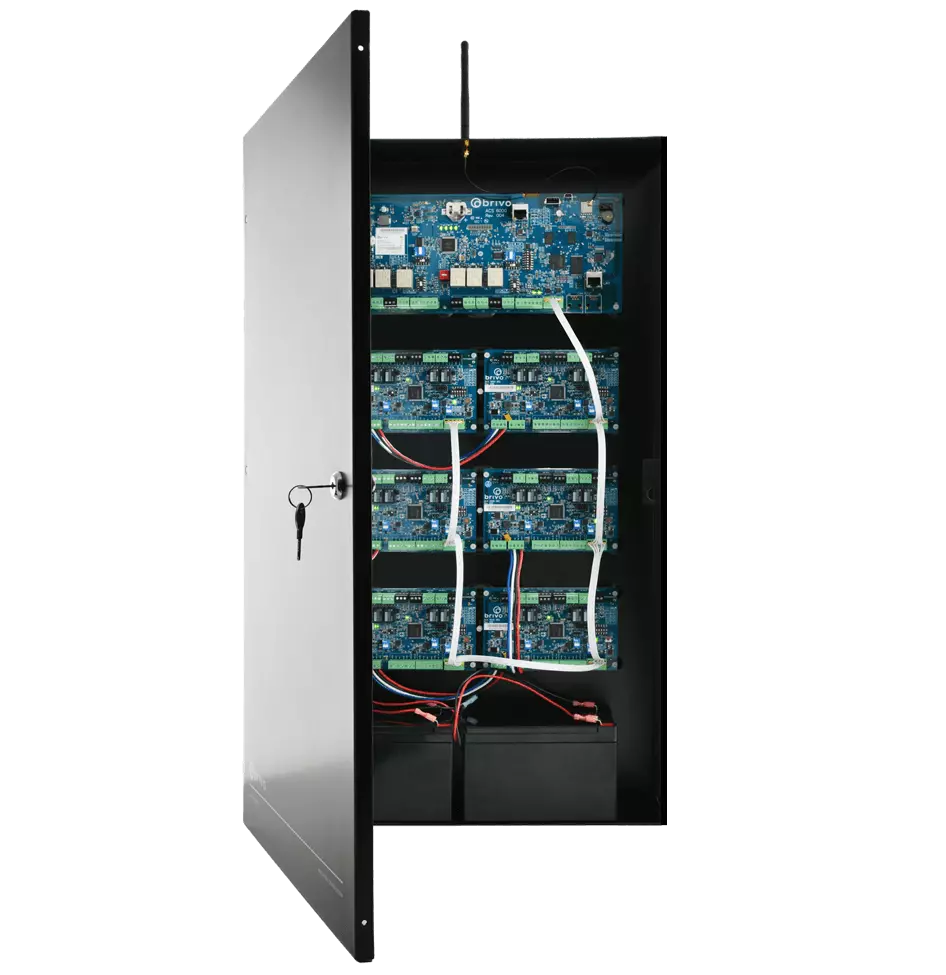
4 crucial elements of an access control plan
A property management team may find it much simpler to choose an access management system after they have a solid understanding of the objectives and intended applications of an access control plan. Although the fundamental operational assumption of all access control system designs is the same, the specific techniques that different configurations use can differ noticeably, therefore it’s important to properly analyze all accessible types of access control.
1. System scope
It’s critical to consider how many users the system will have on a daily basis, the various degrees of access that will be required for various users, and the number of doors or entries that will need to be guarded when planning an access control system. A plan for a tiny, freestanding office will seem very different from an example of access control planning for a school campus.
2. Authentication techniques
How authorized individuals will authenticate their identities is another important consideration in the design of access control systems. Selecting the correct credentials for your building is essential because the main function of access control in security is to restrict who is allowed admission into the area or property. Some of the most widely used login information and access techniques are:
Keypad and PIN access
proximity cards
RFID tags
mobile credentials
Biometrics
There are advantages and disadvantages to each form of credential when selecting them throughout the access control planning process. The most crucial factors to take into account are how user-friendly the system is, how secure the credentials are, and whether your system can handle additional or more sophisticated access methods in the future if necessary.
3. Observation and testing
The monitoring of entry activities and techniques to make sure the system is operating properly should also be included in your access control system design. Depending on the software and system installed, you might need to put more manual monitoring methods in place. While creating access control plans for your company, take into account the following considerations:
Will an internal security team be in charge of locating and handling problems, or will you contract with a third party?
Does your system support automatic alerts?
In the event of a security breach or emergency, what regulations or triggers must be established?
How will teams validate occurrences and people?
A effective access control plan must include testing, so make sure to include timetables and procedures for routine audits as well as metrics for success or failure to make sure you are always protected from the most recent security flaws.
4. Project costs
Access control pricing planning is an essential part of access control system design because it will significantly influence your final plan to be aware of the budget. The readers and hardware you select for access control systems are two examples of how project costs are impacted. Biometric devices provide great security, although they are frequently more expensive than other reader kinds.
The magnitude of your deployment also significantly raises the cost of a system. Most of the time, the access control plan does not require that every door in the facility be monitored and controlled. Front entrances, elevators, turnstiles, parking lots, individual offices, and server or equipment rooms are just a few examples of the many places that require access control. Prioritize the most susceptible areas first if money is short, and if necessary, take into account an access control architecture that allows for future expansion.
Join UPS Stores Using Access Control
With Cloud Based Access Control, UPS Stores can regulate and track who enters its facility for PO Boxes.
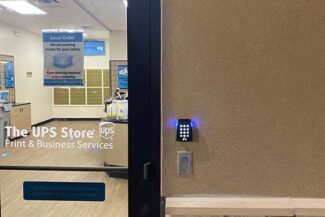
Access control examples and use cases
When used as a component of a commercial security network, each type of access control design has its own set of advantages and user considerations. Here are some typical access control use cases and reasons why some systems could be better suited for particular kinds of buildings:
Designing access control systems for office buildings
Contactless readers and some cloud-based capability would be included in an effective commercial access control solution for this use case. While workplaces must be visited daily by numerous visitors, contactless cards or mobile choices are frequently more effective than biometric access control scanners or keypads, partly because the access method allows for speedier interaction with readers to gain entry. Also, they typically have lower costs.
A touchless access system can also be coupled with a cloud-based network to give security professionals the ability to track how each user uses their credentials and use additional security tools like commercial security cameras and alarms to swiftly understand usage and respond to incidents.
Residential properties’ access control plans
Residential buildings like apartment complexes and multi-tenant housing will typically experience a higher resident turnover rate than commercial establishments, which means that access control plans requiring physical key cards can frequently result in high operational costs related to the replacement and reissuing of physical credentials.
For these use scenarios, mobile credentials can be the perfect multi-tenant access control solution since they give security personnel the option to issue credentials digitally to tenants’ mobile devices while yet retaining the monitoring advantages of contactless systems. As a result, teams may now issue an unlimited number of personalized credentials without incurring additional charges, and they can still integrate access control plans with more extensive cloud-based security and guest management features.
Commercial security cameras for business
- Business security cameras with enhanced coverage and IR that improve situational awareness
- Video analytics with AI to find incidents
- Hours of video are easily sorted through by Video Search to locate a suspicious person or vehicle.
- Integrates with third-party ONVIF® compliant platforms
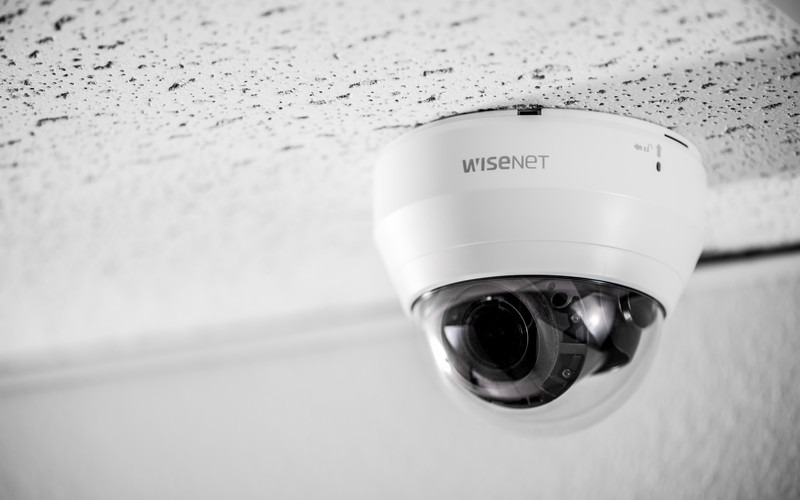
Access control system design for high-security buildings
Some businesses, like government agencies, financial institutions, airlines, and medical research facilities, require more sophisticated security. For high-risk buildings, access control system planning may call for more sophisticated credentials, like biometrics or multi-factor authentication, to provide a better level of security.
There are several access control strategies that combine high-security alternatives with simpler techniques. When considering examples of access control for government-run buildings, it is common for some areas of the facility to require public access while others be more secure. In order to ensure that all high-risk locations stay safe, the access control system strategy should contain devices and protocols for both, taking into account different permission levels and which sorts of access control management approaches, such as rule-based or role-based access strategies, are optimal.
Don’t risk legal
responsibilities.
Contact us right now to set up a consultation with one of our qualified security consultants. We will assist you in seamlessly navigating the complicated terrain of video surveillance laws. Your company deserves the greatest protection possible!
The architectural considerations of access control system design
The special architectural elements of the premises will need to be carefully taken into account as part of the overall access control system planning process, whether an entry point management system is to be installed in a new building or intended as an upgrade to an existing structure.
The system chosen will have a significant impact on the site’s visual appeal, which can play a part in the selection or retention of commercial and residential tenants. Access control design is crucial for a business property’s operation and usability.
Property owners and security teams must take the time to evaluate a few key architectural elements before investing in any individual access control devices or associated hardware components. The following are the procedures to follow in order to evaluate a building’s architectural elements and choose which system would be ideal for your property’s access control plan:
Examine the building plans. Owners should find site designs to help better determine how many devices are needed and where each access control unit should be positioned rather than basing final purchasing selections solely on the visible parts of the property. The installation teams will be able to create a more effective access control plan with the help of these documents, which will provide detailed information about existing electrical systems and how previous structural work was carried out. This will enable teams to make the best use of the resources that are currently available.
Confirm information in writing. When working with an outside installation business, this is crucial. Property owners can validate the scope of the installation and safeguard themselves from unexpected costs by making sure that every aspect of the project is precisely outlined. Written confirmations should include the total scope of the project from beginning to end, the number of devices required, and any installation schedules. A thorough, transparent access control system planning proposal will assist reduce errors and maintain accountability for all parties.
Consult local authorities. Property owners must speak with local officials to find out if their intended access control plans comply with current building and fire rules before proceeding with any installation that necessitates significant structural or electrical work. These regulations will vary between states, with some areas adhering to general guidelines and others adopting local authorities’ construction codes. Any access control plan should take into account this advice, regardless of the situation.
Access control planning for installation and maintenance
Beyond selecting the most suitable form of access control system plan, creating and implementing an access control plan might require a number of intricate considerations.
While working with an access control specialist is advised to guarantee a job well done, it’s also a good idea for property owners to become well-versed on the access control system plans to help supervise the project and ensure that future and ongoing maintenance is carried out. Considerations for installation and upkeep include the following:
choosing between cloud-based and on-premise access control for your plan
Most commercial access control system designs fall into one of two categories: those that use on-premise servers to function or those that are set up to use a cloud-based network. The overall functionality and usability of site-wide security systems will be significantly impacted by the choice between on-premises security and cloud security.
Computer servers must be installed on the premises and all access credentials and permissions must be established locally for an on-premise system. In some circumstances, this can be advantageous because no data must leave the local network. However, the functionality of remote access might be constrained.
A customizable security strategy can be implemented by using a cloud-based server. Several sites may be remotely monitored and permissions can be changed at any time thanks to a single cloud-based platform that handles all interactions. Platforms built on the cloud also lower maintenance costs. Providers frequently manage all IT support internally, which has additional advantages like simpler scalability. If a use-based subscription is chosen, server space can be modified as needed, and total operating expenses can be decreased.
How installation affects access control design
Knowing the entire extent of your access control system plan also entails making the necessary installation preparations. To lower the likelihood of expensive do-it-yourself errors, it is advised to always hire and collaborate with a professional team for any commercial project. New hardware should be backwards compatible with current security systems, and newly installed internet-connected control hubs should be equipped with backup power sources in the event of outages.
evaluating ongoing maintenance requirements
The installation of new hardware is only one aspect of access control system planning; future scalability and all periodic maintenance requirements must also be taken into account. For systems employing on-premise servers, this often include IT teams conducting routine server checkups and may include the renewal of recurring licenses.
Upgrades must also be taken into account, which frequently entails sending a qualified integrator to the location to access on-site gear. Depending on the size of the premises and the number of devices, certain systems will necessitate manual upgrades on individual credential readers and control hubs as well.
Most server-related maintenance for websites employing cloud-based platforms will be carried out by the service provider’s IT support staff and rolled out automatically as soon as they are available. Plans for access control systems for internet-connected hubs should specify routine upkeep for any battery packs and network receivers, as these components need to be serviced on-site.
Access control system plans to strengthen on-site security
On-site security systems should be designed with control and adaptability in mind so that property owners and security teams may utilize resources as effectively as possible. To increase security while granting operators freedom in system management, consider the following components of an access control plan:
Site-specific permissions – By providing unique access credentials to every authorized user, security teams may keep an eye on and modify permissions based on designated company responsibilities. This is especially helpful when used across numerous locations because a centralized team can remotely manage all rights that are in use. Individual credentials can be integrated into a more comprehensive access control design to speed up incident response. If a security threat develops, administrators can rapidly determine whose credentials have been used to access relevant areas, and security teams can immediately cancel rights from anywhere.
Username and password for mobile devices Security teams can avoid spending money on expensive physical key cards and fobs by choosing a door card reader that accepts mobile credentials. This results in more easy access control plan templates since temporary credentials can be quickly supplied to guests and visitors on their phones, and administrators can withdraw permissions remotely when necessary.
Integrations with visitor management — As it’s not always possible to hand out physical key cards or make sure that all visitors are escorted through the facility by authorized individuals, commercial and residential establishments that receive a lot of temporary visitors may find it challenging to track access credentials. Temporary mobile credentials can be given to visitors, which can then be used to restrict access to only preset locations, by combining on-site access control readers with an electronic visitor management system in the larger access control system architecture. This is especially helpful for monitoring access to contractors operating after-hours or for making sure that proper protection is implemented in educational settings like schools.
Access control plan template
Now that they know what to consider when establishing an access control system, property owners should be able to put new hardware into place successfully. But, a documented access control strategy must be made.
The following details will be included in an actionable access control planning document:
Introduction: This will cover all site-wide security and access control policies as well as a description of the project’s resources. Any access control models that are already in use should be described, along with information on how these systems might affect the proposed installation.
Physical security protocols: This section will explain the environmental access control and physical security features on the facility, including illumination, sensors, alarms, and CCTV systems. Protocols for emergency lockdowns should also be specified, including how law enforcement is supposed to enter the site.
Installation and power supply: Here, the technical requirements for implementing access control system plans, including hardware specifications, power sources, software management, and maintenance requirements, will be defined. It should also take into account how the system will be monitored and how backup access control methods will be used in the event of a power outage.
Infrastructure: This section should list all internal technical data pertaining to site-wide cybersecurity features. Individual unit passwords, computer network restrictions, internal access control procedures, and any role-based access control measures related to the new hardware should all be included in this.
Have questions? We can help
Our security experts can help you implement the right security system for your business.




